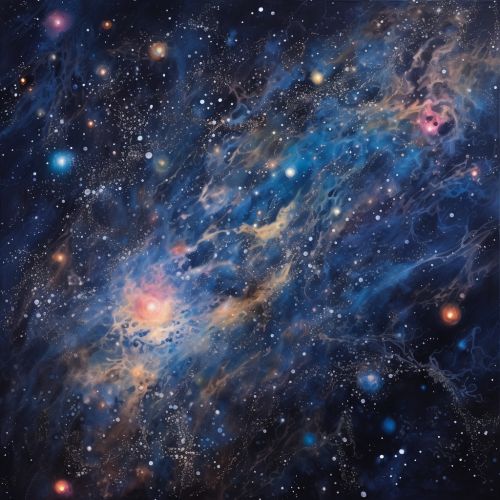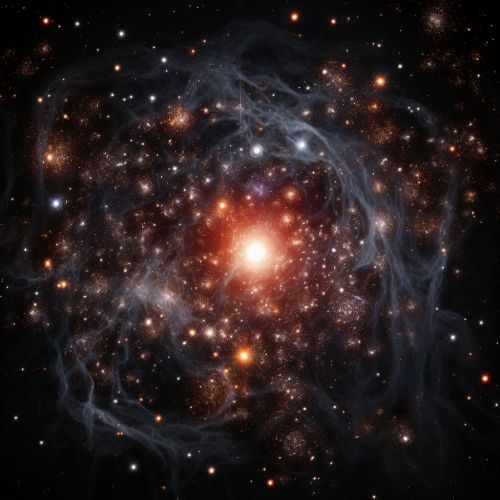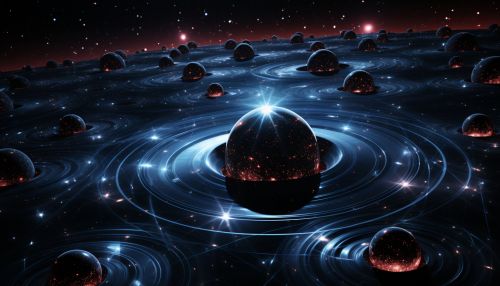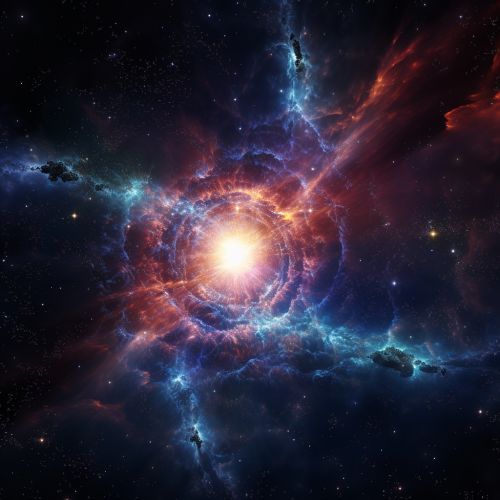Theoretical Perspectives on Dark Matter and Dark Energy
Introduction
Dark matter and dark energy are two of the most enigmatic concepts in modern astrophysics. Together, they constitute approximately 95% of the universe's total energy density, with dark matter accounting for about 27% and dark energy for about 68%. Despite their prevalence, these entities remain largely theoretical, as they do not interact with electromagnetic radiation and are thus invisible to our current observational equipment. This article delves into the theoretical perspectives that attempt to explain these elusive phenomena.


Dark Matter
Dark matter is a hypothetical form of matter that is thought to account for approximately 27% of the universe's mass-energy content and about 85% of its total mass. It is called "dark" because it does not emit, absorb or reflect light, making it extremely difficult to detect.
Evidence for Dark Matter
The existence of dark matter is inferred from its gravitational effects on visible matter, radiation, and the large-scale structure of the universe. Scientists first proposed its existence during the 1930s, when Swiss astrophysicist Fritz Zwicky observed that galaxies in the Coma Cluster were moving much faster than expected based on the visible matter present. This discrepancy, known as the "missing mass problem," led to the hypothesis that there must be some form of unseen matter causing the observed gravitational effects.


Theoretical Models
Several theoretical models have been proposed to explain the nature of dark matter. One of the most popular is the Cold Dark Matter (CDM) model, which suggests that dark matter particles were moving slowly compared to the speed of light at the time of their decoupling from the rest of matter and radiation. Another model, Warm Dark Matter (WDM), suggests that these particles were moving at relativistic speeds at the time of decoupling.
Dark Energy
Dark energy is a theoretical form of energy that permeates all of space and tends to accelerate the expansion of the universe. It is estimated to constitute approximately 68% of the universe's total energy density.
Evidence for Dark Energy
The existence of dark energy was first proposed following observations of distant supernovae that suggested the universe's expansion is accelerating. This acceleration, first noted in the late 1990s, was unexpected, as gravity should cause expansion to slow down. To explain this discrepancy, scientists proposed the existence of a force that works in opposition to gravity on cosmological scales - dark energy.


Theoretical Models
The nature of dark energy is one of the biggest mysteries in science. The simplest explanation is the cosmological constant, first proposed by Albert Einstein, which represents a constant energy density filling space homogeneously. Another theory is quintessence, a dynamic, time-evolving, and spatially dependent form of energy with negative pressure sufficient to drive the observed acceleration.
Conclusion
While dark matter and dark energy are still largely theoretical, their existence is supported by a significant body of observational evidence. They remain the subject of intense study and debate among scientists, who continue to develop and refine theories in an attempt to explain these mysterious components of our universe.


